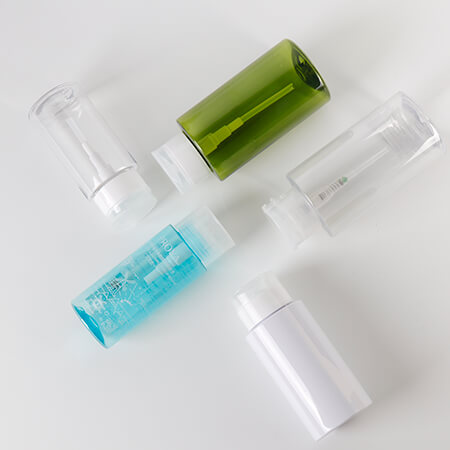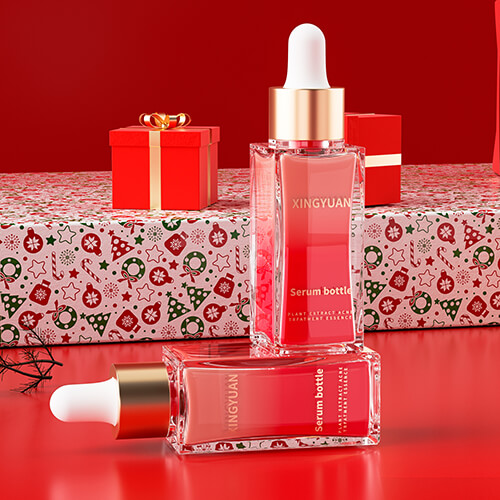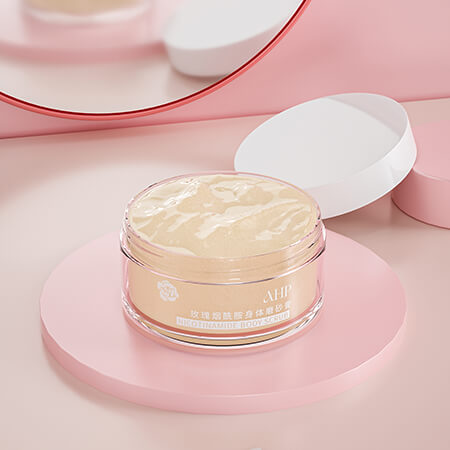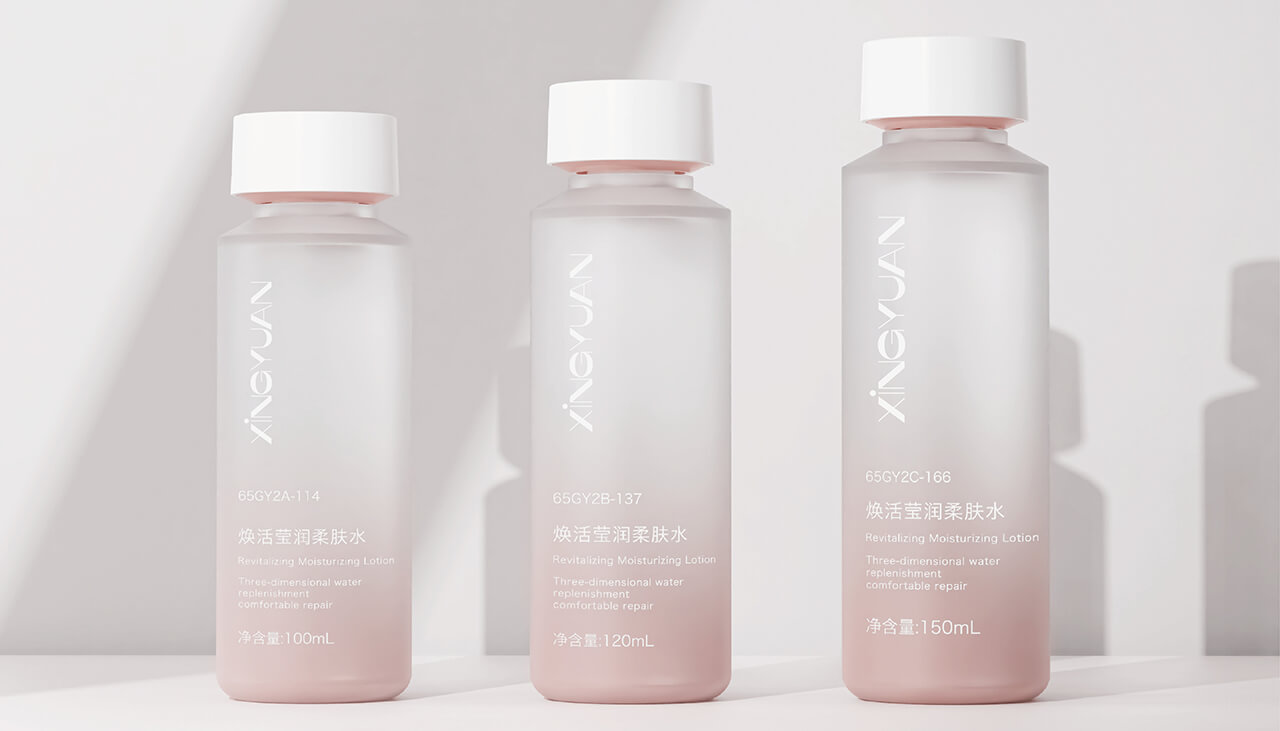Welcome, friends, to this exciting journey into the world of cosmetic packaging! Today, we embark on a delightful exploration to uncover the captivating differences between two popular plastics: PET and PETG. As we dive into this topic, we will unravel the secrets behind these materials, shining a light on their unique characteristics, benefits, and applications in the cosmetics industry.
Packaging plays a vital role in the realm of cosmetics, ensuring the protection, presentation, and preservation of beauty products. Among the myriad options available, PET (Polyethylene Terephthalate) and PETG (Polyethylene Terephthalate Glycol) plastics have gained significant popularity. These materials possess distinct properties that make them particularly suitable for cosmetic packaging, making it crucial for manufacturers and suppliers to understand their differences.
In this engaging expedition, we will embark on an adventure of knowledge, guiding you through the enchanting world of PET and PETG plastics. So, sit back, relax, and allow me to be your tour guide, as we embark on this delightful journey into the divergent paths of PET and PETG plastics.
Outline
Understanding PET Plastic
As our expedition into the world of cosmetic packaging continues, let us begin our exploration by delving into the fascinating realm of PET plastic. PET, also known as Polyethylene Terephthalate, is a widely used material in various industries, including cosmetics.

PET plastic is renowned for its exceptional properties that make it an ideal choice for packaging beauty products. Its versatility, durability, and transparency have earned it a prominent place in the cosmetics industry. Allow me to shed light on the key aspects of this captivating material.
Firstly, let us understand the definition and characteristics of PET plastic. PET is a thermoplastic polymer that is derived from petroleum. It possesses remarkable clarity, making it ideal for showcasing the vibrant colors and textures of cosmetics. Additionally, PET is lightweight, allowing for ease of transportation and reducing shipping costs.
In the realm of cosmetics, PET plastic finds a multitude of applications. It is commonly used for packaging products such as shampoos, lotions, serums, and perfumes. The excellent barrier properties of PET help protect these valuable formulations from external factors such as moisture, air, and UV radiation, ensuring the integrity and longevity of the products.
The advantages of PET plastic extend beyond its visual appeal and protective qualities. PET is a highly recyclable material, contributing to sustainable practices in the cosmetics industry. By utilizing recycled PET, known as rPET, companies can reduce their carbon footprint and promote a circular economy. Moreover, PET is resistant to impact and breakage, ensuring the safe transportation and handling of cosmetic products.
However, it is important to consider the limitations of PET plastic. While it provides sufficient protection for most cosmetics, it may not be suitable for products that require high chemical resistance, such as certain aggressive solvents or essential oils. Additionally, PET has a lower heat resistance compared to other plastics, limiting its application in hot-fill processes.
Now that we have familiarized ourselves with the captivating world of PET plastic, we can proceed to our next destination: understanding PETG plastic. So, fasten your seatbelts and get ready for an exhilarating adventure into the realm of PETG plastics, as we continue our quest for knowledge in the realm of cosmetic packaging!
Understanding PETG Plastic
As we venture further into our expedition, our attention now turns to the captivating realm of PETG plastic. PETG, or Polyethylene Terephthalate Glycol, is a remarkable material that shares similarities with PET plastic but possesses distinct characteristics that set it apart. Let us explore this fascinating plastic and its significance in the world of cosmetic packaging.
PETG plastic, like its PET counterpart, is a thermoplastic polymer derived from petroleum. However, what makes PETG truly intriguing is the addition of glycol during its manufacturing process. This modification enhances the material’s properties, granting it a unique set of attributes.

One of the defining characteristics of PETG plastic is its exceptional clarity. Similar to PET plastic, PETG boasts excellent transparency, allowing the true colors and textures of cosmetics to shine through. This makes it an ideal choice for packaging products that rely on visual appeal to attract customers.
In the cosmetics industry, PETG plastic finds extensive application in various packaging formats, including bottles, jars, and tubes. Its durability and impact resistance make it particularly suitable for products that may undergo frequent handling or transportation. Whether it’s a luxurious moisturizer, a vibrant lipstick, or a delicate fragrance, PETG provides the necessary protection to keep these treasures safe and intact.
Advantages of PETG plastic extend beyond its visual appeal and durability. PETG exhibits superior chemical resistance compared to PET, making it suitable for a wider range of cosmetic formulations. It can withstand contact with various solvents, oils, and alcohols, ensuring the integrity of the product and preventing any adverse reactions between the packaging material and the contents.
Another noteworthy aspect of PETG is its versatility in manufacturing processes. It can be easily molded into complex shapes, allowing for innovative and eye-catching designs in cosmetic packaging. Additionally, PETG can be decorated through techniques such as printing, labeling, or hot stamping, further enhancing the visual appeal of the packaging.

While PETG plastic boasts numerous advantages, it is essential to consider its limitations. PETG has slightly lower heat resistance compared to PET, which means it may not be suitable for certain hot-fill processes. Additionally, although PETG is recyclable, it may require separate recycling streams due to its unique properties, which should be taken into account for sustainable packaging practices.
As we bid farewell to the captivating realm of PETG plastic, we have gained valuable insights into its distinct qualities and applications. But our expedition is far from over. Join me as we embark on the next leg of our journey, where we will compare PET and PETG plastics side by side, uncovering their divergent paths and helping us make informed choices in cosmetic packaging.
Comparing PET and PETG Plastics
As our expedition progresses, we find ourselves at a crucial juncture—comparing the enchanting PET and PETG plastics. These two materials, though related, possess unique characteristics that set them apart. By understanding their differences, we can make informed decisions when it comes to selecting the perfect packaging material for cosmetics. So, let’s dive into this comparative exploration.
1. Physical Properties and Appearance:
PET: PET plastic exhibits exceptional clarity and transparency, allowing the beauty of cosmetics to shine through. It has a glossy surface and offers a glass-like appearance, making it visually appealing.
PETG: Similarly, PETG plastic boasts remarkable clarity and transparency, providing an excellent showcase for cosmetic products. Its surface is glossy as well, ensuring an attractive presentation.
2. Clarity and Transparency:
PET: PET plastic is known for its high clarity, offering a crystal-clear view of the contents. It allows customers to see the color, texture, and quality of the cosmetics, enticing them to make a purchase.
PETG: PETG plastic shares PET’s clarity, providing a clear view of the packaged products. It allows the vibrant hues and textures of cosmetics to captivate potential buyers, encouraging them to explore further.

3. Chemical Resistance:
PET: While PET plastic provides sufficient chemical resistance for most cosmetic formulations, it may not withstand exposure to aggressive solvents or essential oils. Care must be taken to ensure compatibility between the packaging and the product.
PETG: PETG plastic exhibits superior chemical resistance compared to PET, making it suitable for a broader range of cosmetic formulations. It can withstand contact with various solvents, oils, and alcohols without compromising the integrity of the packaging.
4. Impact Resistance and Durability:
PET: PET plastic offers good impact resistance, making it durable and suitable for products that require transportation or frequent handling. It provides reliable protection against breakage and damage.
PETG: PETG plastic excels in impact resistance, surpassing the durability of PET. It can withstand rough handling and accidental drops, ensuring the safety and longevity of cosmetic products during transportation and use.
5. Environmental Considerations:
PET: PET plastic is highly recyclable and can contribute to sustainable practices in the cosmetics industry. Utilizing recycled PET (rPET) reduces the reliance on virgin plastic and promotes a circular economy.
PETG: PETG plastic is also recyclable, aligning with eco-friendly initiatives. However, due to its unique properties, separate recycling streams may be required for PETG, ensuring proper waste management.
6. Cost Comparison:
PET: PET plastic is widely available and relatively cost-effective, making it a popular choice for cosmetic packaging. Its affordability contributes to overall cost savings for manufacturers and suppliers.
PETG: PETG plastic tends to be slightly more expensive than PET due to its enhanced properties and manufacturing process. However, the added benefits it offers may justify the higher cost for certain cosmetic packaging needs.
By understanding the divergent paths of PET and PETG plastics, we can now make informed decisions when it comes to selecting the ideal packaging material for cosmetics. Join me as we continue our voyage, delving into the considerations that come into play when choosing between PET and PETG plastics.
Choosing the Right Plastic for Cosmetic Packaging
As our expedition through the enchanting world of PET and PETG plastics nears its conclusion, we now arrive at a critical destination—selecting the perfect packaging material for cosmetics. With a comprehensive understanding of the differences between PET and PETG plastics, we can navigate the decision-making process effectively. Let us explore the factors to consider when choosing between these captivating materials.
1. Factors to Consider:
When selecting packaging materials for cosmetics, several factors come into play. These include:
- Product Compatibility: Consider the specific formulation and ingredients of the cosmetics. Ensure that the chosen plastic is compatible with the product, especially in terms of chemical resistance.
- Packaging Requirements: Assess the specific packaging requirements, such as bottle size, shape, and closure mechanism. Consider the feasibility of molding or shaping the plastic material accordingly.
- Visual Appeal: Evaluate the importance of transparency and clarity for the cosmetic product. Determine whether PET or PETG plastic would better showcase the colors, textures, and overall aesthetics.
- Durability and Protection: Consider the level of impact resistance and durability required for the intended use and transportation of the cosmetic products.
- Environmental Sustainability: Factor in the environmental impact of the chosen plastic material. Assess the recyclability and potential for incorporating recycled content, aligning with sustainability goals.
2. Application-Specific Considerations:
Each cosmetic product may have unique requirements that influence the choice between PET and PETG plastics. Consider the following:

- PET for Standard Formulations: PET plastic is suitable for most cosmetic products that do not require high chemical resistance. It offers excellent clarity, impact resistance, and recyclability, making it a versatile choice.
- PETG for Chemical-Intensive Formulations: For cosmetics with aggressive solvents or essential oils, PETG plastic’s superior chemical resistance makes it a preferred option. It ensures compatibility and prevents any adverse reactions between the packaging and the product.
- Customization and Design Flexibility: PETG’s versatility in molding complex shapes and its compatibility with printing and decoration techniques make it an excellent choice for innovative and visually striking packaging designs.
3. Recommendations for Different Types of Cosmetic Products:
- Skincare and Lotions: Both PET and PETG plastics are suitable for skincare and lotion packaging. Consider the formulation’s specific requirements and choose accordingly.
- Fragrances: PETG plastic’s exceptional chemical resistance makes it an ideal choice for fragrance packaging, as it can withstand contact with alcohol-based perfumes.
- Makeup and Color Cosmetics: Both PET and PETG plastics can effectively showcase the vibrant colors and textures of makeup products. Consider the desired level of chemical resistance and design requirements.
- Haircare Products: PET plastic is often a suitable choice for haircare product packaging, offering durability and protection during transportation and use.
As our journey nears its end, armed with knowledge and insights, you can now confidently embark on the quest to select the most appropriate plastic material for cosmetic packaging. Remember to consider product compatibility, packaging requirements, visual appeal, durability, and environmental sustainability. May your choices be guided by the desire to present beauty to the world in a safe, captivating, and sustainable manner.
Join me in the final stretch of our expedition as we conclude with a recap of the key differences between PET and PETG plastics and reflect on the significance of understanding plastic properties in the realm of cosmetic packaging.
Conclusion
As our exhilarating journey through the divergent paths of PET and PETG plastics comes to a close, we find ourselves equipped with a wealth of knowledge that will aid us in the realm of cosmetic packaging. We have explored the unique characteristics, advantages, and limitations of these captivating materials, allowing us to make informed decisions for our cosmetic products.
Understanding the differences between PET and PETG plastics is crucial for cosmetic manufacturers and suppliers. By considering factors such as product compatibility, packaging requirements, visual appeal, durability, and environmental sustainability, we can select the ideal plastic material to enhance the allure and protection of our cosmetics.
PET plastic shines with its exceptional clarity, impact resistance, and recyclability. It is a versatile choice for a wide range of cosmetic formulations, providing an enticing showcase for the vibrant colors and textures of beauty products. On the other hand, PETG plastic offers superior chemical resistance, making it suitable for cosmetics with aggressive solvents or essential oils. Its durability and customization options make it an excellent choice for innovative packaging designs.
The quest for the perfect plastic material goes hand in hand with considering the specific needs of different cosmetic products. Whether it’s skincare, fragrances, makeup, or haircare, the unique properties of PET and PETG plastics can be harnessed to ensure optimal packaging solutions.
Furthermore, our environmental consciousness must guide our choices. Both PET and PETG plastics are recyclable, contributing to sustainability efforts in the cosmetics industry. By incorporating recycled content and supporting circular economy practices, we can reduce our impact on the environment.
In conclusion, dear friends, as we reach the end of our expedition, let us remember the significance of understanding the properties of PET and PETG plastics in the realm of cosmetic packaging. By making informed choices, we can create a harmonious blend of functionality, aesthetics, and sustainability. May your cosmetic products find their perfect vessel, captivating customers and preserving beauty with every use.
Thank you for joining me on this delightful journey, and may your future endeavors in the world of cosmetic packaging be filled with success, innovation, and a deep commitment to the beauty that lies within and without.
Safe travels on your continued exploration!

0 Comments